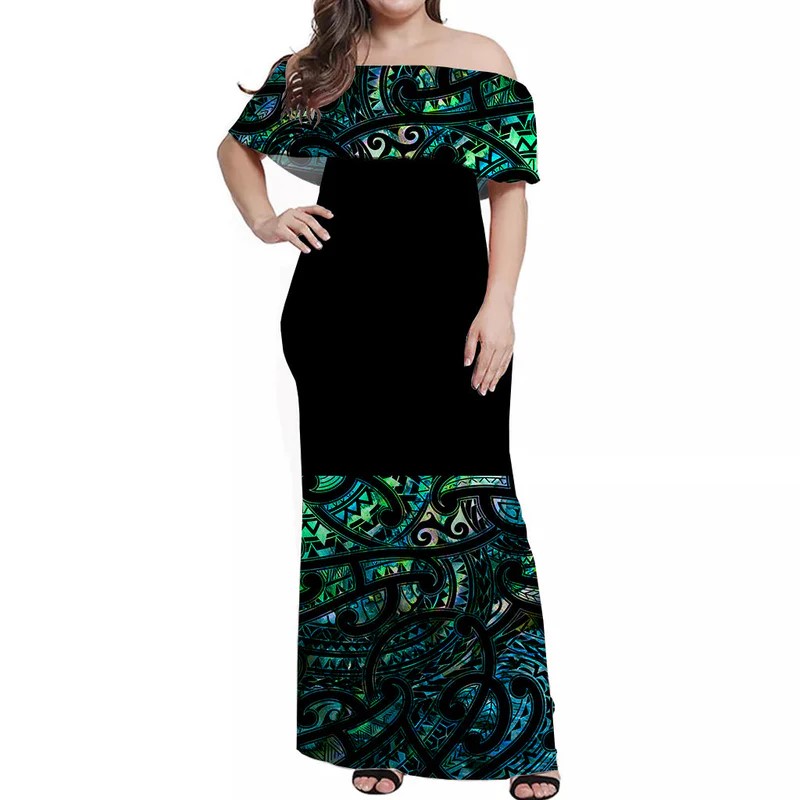Traditional New Zealand Clothing: Embrace the Heritage and Craftsmanship

Traditional New Zealand clothing reflects the rich tapestry of Māori culture and heritage, showcasing a unique blend of natural beauty and profound spiritual significance. As the indigenous people of New Zealand, the Māori have developed their clothing traditions in isolation from other cultures, leading to garments that serve practical purposes and embody ancestral stories and connections to the land. In this exploration of traditional New Zealand clothing, we will delve into the materials, designs, and cultural contexts that shape the attire of the Māori people today, highlighting the vital role these garments play in identity and heritage.
I. The Unique Heritage of New Zealand’s Traditional Attire
The foundations of New Zealand traditional attire lie in the profound relationship between the Māori people and their environment. This connection has led to clothing styles that are not merely functional but laden with symbolism and meaning, representing the community’s history, beliefs, and values.
Origins of New Zealand Clothing Traditions
New Zealand clothing traditions have deep roots in Māori culture, evolving from the resourceful practices of the first Polynesian settlers. When Māori ancestors arrived, they adapted their knowledge and techniques to New Zealand’s unique environment, using native plants and animals to create garments suited to the landscape.

Over time, the Māori adapted their clothing to suit the changing climate and available materials. Their garments, known as New Zealand traditional clothes, were crafted from natural fibers, animal skins, and feathers, leading to intricate designs and elaborate ceremonial attire.
The artistic expression found in Māori clothing is a direct reflection of the creativity and ingenuity of its makers, who utilized their environment to create beautiful and meaningful garments.
Cultural Significance of Garments
Each piece of traditional New Zealand clothing carries significant cultural weight, representing identity, status, and tribal affiliation. Cloaks, skirts, and headdresses are not just clothing items; they are symbols of mana (spiritual power) and connection to one’s lineage. Through garments, the Māori honor their ancestors while expressing their unique place within the broader tapestry of New Zealand society.
Garments like the Korowai – a full feather cloak embody this connection beautifully. Each feather in its construction tells a story, linking the wearer to their ancestors and the natural world. The craftsmanship behind these creations is revered, reinforcing the importance of preserving traditional clothing practices for future generations.
II. Traditional New Zealand Clothing
The essence of traditional New Zealand clothing can be observed in the distinctive garments worn by the Māori people. Each piece tells a story of identity, culture, and ancestry, from intricately designed cloaks to unique skirts.
Kākahu (Traditional Garments)
Kākahu refers to many traditional Māori garments, primarily cloaks crafted with great care and often holding spiritual and symbolic meanings. These garments were worn during important ceremonies and were considered symbols of status and identity within Māori society. The following are three prominent types of kākahu:
Korowai (Feather Cloaks)

The Korowai is one of the most well-known types of Māori cloaks. It is characterized by the use of feathers, often from native birds, carefully woven into the cloak. Each Korowai is unique, and the feathers symbolize both protection and the wearer’s mana (spiritual power).
These cloaks were traditionally worn by chiefs and individuals of high social standing, particularly during significant events such as weddings, funerals, pōwhiri, and ceremonial gatherings.
Kahu Kiwi (Kiwi Feather Cloaks)

The Kahu kiwi, a specific type of feather cloak, is a testament to the skill and dedication of Māori artisans. Incorporating feathers from the native kiwi bird, these cloaks hold special spiritual significance, believed to connect the wearer to the earth and the spiritual realm.
Making a kahu kiwi is a labor-intensive process, requiring skilled artisans to weave the delicate feathers into a sturdy yet soft garment. The result is a rare and deeply meaningful garment, often worn by tribal leaders or those of esteemed rank, a symbol of their status and connection to their culture.
Kahu Huruhuru (Feathered Cloaks)

Another type of feathered cloak, Kahu huruhuru, also incorporates feathers, but from a variety of native birds, not limited to the kiwi. The use of multiple feathers creates intricate patterns, with each feather contributing to the story told by the cloak. Kahu huruhuru is highly decorative and is worn during important cultural events. Like other kākahu, it symbolizes the wearer’s mana and connection to their ancestors.
Piupiu (Flax Skirts)

The piupiu, or flax skirt, is another quintessential element of traditional Māori clothing. Crafted from dried harakeke leaves, these skirts feature a distinctive fringe that creates a rhythmic sound when worn.
Historically, piupiu were worn during performances and ceremonies, enhancing the visual and auditory experience of Māori cultural expressions. Today, they are still donned during kapa haka (traditional Māori performing arts) events, showcasing the resilience of these conventional garments in contemporary contexts.
Beyond their aesthetic appeal, piupiu serve as a reminder of the importance of movement and rhythm within Māori culture. The sound produced when dancing in a piupiu resonates with the land’s heartbeat, connecting the performer to their cultural roots and ancestral stories.
Tātua / Tū (Belts)

Tātua for men and tū for women were traditional Māori belts used to secure cloaks or skirts. Men’s belts, often more ornate with intricate designs, symbolized higher social status or battle rank.
Both belts were commonly made from plaited harakeke (flax) or other materials like kiekie and pīngao. In addition to their practical use, these belts held symbolic significance, providing spiritual protection and showcasing Māori craftsmanship passed down through generations.
III. Key Elements of Traditional New Zealand Clothing
At the heart of traditional New Zealand clothing are key elements that define its uniqueness. These include the materials used, design patterns, and the colors that carry specific meanings within Māori culture.
Materials Used


Traditional New Zealand Clothing is made from locally sourced natural materials, reflecting their philosophy of sustainability and respect for nature. Harakeke (New Zealand flax), cabbage tree fibers, and grasses are woven into functional and decorative garments, often with colorful patterns.
Kiwi and huia feathers hold spiritual significance, transforming garments into sacred symbols that represent the connection between people and nature.
Design Patterns and Symbols

The patterns in traditional New Zealand clothing hold deep cultural significance, often depicting nature or ancestral stories, symbolizing a connection to the land.
For example, the spiral koru motif represents new life and growth, commonly seen in Māori art and clothing. Additionally, bold geometric shapes and lines reflect identity, tribal heritage, and the skilled craftsmanship of Māori artisans.
Traditional Colors and Their Significance

Color plays a crucial role in traditional New Zealand clothing, adding layers of cultural meaning. The three primary colors in Māori attire—red, black, and white—each hold deep significance.
- Red symbolizes strength and vitality, representing ancestral blood and the wearer’s life force.
- Black signifies the complexity of identity, as well as deep knowledge and experience.
- White represents purity and peace, often used in ceremonial contexts.
Beyond aesthetics, these colors reflect Māori spiritual beliefs, enhancing the cultural depth of the traditional clothing of New Zealand and transforming garments into powerful symbols of heritage and identity.
IV. Materials and Weaving Techniques
The artistry of traditional New Zealand clothing is primarily attributed to the materials used and the intricate weaving techniques employed by Māori artisans. Understanding these aspects provides deeper insight into the craftsmanship that defines their traditional attire.
Harakeke (Flax)

Harakeke, or New Zealand flax, is perhaps the most significant material used in Māori clothing. Known for its durability and versatility, harakeke is harvested sustainably, ensuring the health of the plants for future generations.
Māori communities have long embraced the practice of harvesting harakeke, employing traditional techniques that celebrate the plant’s cultural value. The leaves are stripped, processed, and twisted into fibers, which can be woven into various clothing items, including skirts, cloaks, and hats.
The beauty of Harakeke lies not only in its physical properties but also in the cultural teachings associated with its use. Each process stage—harvesting to weaving—is imbued with rituals connecting the maker to their ancestors and the natural world.
Weaving Techniques

Weaving is a cornerstone of traditional New Zealand clothing, and skills have been passed down through generations. Artisans use various techniques to create intricate patterns and textures reflecting their cultural narratives.
The Māori weaving tradition encompasses several styles, including plain weave, twill weave, and basketry methods. Each technique serves different purposes and requires distinct skill sets. For instance, the fine linen in high-status garments involves a more delicate weaving process, while coarser weaves are suited to everyday wear.
The act of weaving is imbued with meaning and is seen as a way to convey one’s identity and cultural heritage. Māori weavers approach their craft with reverence, acknowledging the spirits of the materials and the significance of the stories they are crafting into the fabric.
V. Traditional Maori Accessories
Māori accessories, like their garments, are deeply rooted in cultural significance. They symbolize the wearer’s status, spirituality, and connection to the natural world. These traditional accessories are crafted with precision and care, often incorporating natural materials such as bone, shell, and stone. Below are some of the most prominent conventional Māori accessories.
Hei Tiki (Neck Pendant)

The hei tiki is one of the most iconic Māori accessories. This neck pendant is traditionally carved from pounamu (greenstone) or bone and is often shaped to resemble a human figure. The tiki represents ancestors; wearing it is believed to bring the wearer strength, protection, and good fortune.
Hei tiki pendants are usually passed down through generations, accumulating mana (spiritual power) over time. Each hei tiki is unique, with carvings reflecting the wearer’s tribal affiliations and personal history.
Kōauau (Bone and Wood Flutes)

The kōauau is a traditional Māori flute made from bone, wood, or stone. It is a small wind instrument with three finger holes that create soft, melodic sounds. The kōauau was often played during storytelling, ceremonial gatherings, and personal moments of reflection.
In addition to its musical function, the flute also held cultural significance, with some instruments believed to have the power to communicate with the gods or call out to ancestors. The craftsmanship of the kōauau reflects the Māori reverence for music and its role in spiritual expression.
Huia Feather

The huia feather, once one of the most prized Māori adornments, was not just a decorative accessory. It symbolized high rank and mana, typically worn by chiefs or individuals of significant social standing. Now, from the extinct huia bird, these black-and-white tail feathers were more than just a fashion statement.
They represented leadership and were passed down as treasured heirlooms, carrying the weight of Māori history and tradition. Though the huia bird is no longer present, the feather remains a powerful symbol in Māori culture, a testament to the enduring legacy of Māori leadership.
Whakakai (Earrings)

Traditional Māori earrings, or whakakai, were worn by both men and women. These earrings were typically carved from bone, stone, or pounamu and often featured intricate designs. The shapes of whakakai varied, but many were long, slender pieces that dangled from the ears.
As with other Māori accessories, the designs and materials used in shikakai were symbolic, representing different aspects of the wearer’s identity, ancestry, and tribal affiliations.
VI. Spiritual and Cultural Significance of Māori Clothing
The clothing of the Māori people transcends mere function; it embodies the spiritual and cultural essence of their identity. Each garment tells a story, linking the wearer to their ancestors, tribal affiliations, and the natural world.
Connection to Ancestral Stories

Māori clothing deeply connects to ancestral narratives, representing history and identity. Each piece, like cloaks or skirts, carries the legacy of those before, particularly garments like the Korowai made with feathers.
These feathers symbolize both the bird and the lineage of the ancestors, making the clothing a tribute to the past. Māori artisans carefully select materials to craft garments that tell stories, bridging generations and passing down wisdom from the past to guide the present and future.
Symbolism of Mana
Mana, central to Māori culture, represents spiritual power and authority. Traditional garments are believed to hold mana, enhanced by the materials, patterns, and colors used. For example, a Korowai made with kiwi feathers deepens the wearer’s connection to their ancestors and the spiritual realm.
Wearing these garments embodies cultural pride and heritage, reinforcing their people’s identity and mana. As Mahatma Gandhi once said, “A nation’s culture resides in the hearts and in the soul of its people.” This reflects how Māori clothing is more than expression—a profound representation of cultural pride.
VII. Traditional Influences in Modern New Zealand Fashion
New Zealand’s fashion landscape is deeply influenced by its Māori heritage, with traditional elements seamlessly blending into contemporary styles. As interest in cultural heritage grows, traditional motifs, materials, and techniques continue to shape modern fashion trends.
Revival of Indigenous Styles
In recent years, there has been a renewed appreciation for indigenous designs, particularly at cultural festivals and public events, where traditional garments symbolize unity and pride. Many New Zealand designers are incorporating Māori weaving techniques, patterns, and symbolism into their collections, creating a fusion of heritage and modern aesthetics.
Cultural Integration in the Fashion Industry
New Zealand’s fashion industry has embraced indigenous influences, with designers integrating traditional elements into mainstream clothing. Collaborations with Māori artists and weavers have gained international recognition, showcasing the country’s unique blend of history and innovation. This growing appreciation for cultural craftsmanship continues to shape New Zealand’s evolving fashion identity.
✨ Celebrate the vibrant heritage of New Zealand with exquisite designs that seamlessly blend tradition and contemporary style at Polynesian Pride!
VIII. Where to Purchase Traditional New Zealand Clothing
Several avenues are available for those interested in exploring and purchasing traditional New Zealand. Museums, cultural centers, and ethical shopping practices provide opportunities to acquire these unique garments while supporting Māori artisans and communities.
Museums & Cultural Centers
Many museums and cultural centers in New Zealand showcase Māori clothing, offering insights into its history and craftsmanship. Some also provide workshops and live demonstrations, allowing visitors to engage with traditional weaving techniques. Many cultural centers have gift shops selling authentic Māori garments, directly supporting local artisans.
Ethical Shopping
To ensure ethical purchases, buy from Māori-owned businesses and locally made products. Many Māori designers now sell online, making these garments accessible worldwide while supporting sustainable fashion.
Polynesian Pride is your online destination for authentic New Zealand clothing, inspired by New Zealand’s cultural centers. Discover ethically crafted garments by Māori-owned businesses and embrace sustainable style.🌿✨
CONCLUSION
Traditional New Zealand clothing offers a glimpse into Māori culture and identity, with its intricate designs, symbolism, and sustainable practices reflecting deep heritage. Exploring the key elements, materials, and cultural significance of Māori attire reveals its ongoing relevance in modern society.
The renewed interest in traditional New Zealand clothing and the incorporation of Māori design principles into contemporary fashion underscores the journey of cultural preservation and revitalization. By valuing and supporting Māori artisans, we honor the stories and wisdom these garments represent, ensuring the legacy of New Zealand’s typical clothing continues to thrive for future generations.
FAQs
1. What are the traditional clothes in New Zealand?
Korowai (woven flax cloaks) and piupiu (flax skirts) are key pieces of Māori traditional clothing, often worn in ceremonies, cultural events, and the haka.
2. What is traditional Māori clothing called?
The most recognized traditional garment is the Kakadu, a general term for Māori cloaks. These cloaks feature intricate patterns and feathers, symbolizing the wearer’s status and mana. Ko te kakahu tēnei o tōku tīpuna.
3. Why do Māori wear feathers?
In traditional Māori thought, many birds were considered chiefly. Feathers from certain birds were used to adorn high-born people, especially as plumes in the hair. Chiefs wore kahu huruhuru (feather cloaks) made from the feathers of the most beautiful birds.
4. How do you dress like a New Zealander?
New Zealanders favor a simple, effortless style, often wearing black in summer and jeans with a white T-shirt in winter, while high heels are uncommon.

I’m a lifestyle curator who has blended Polynesian foodways and fashion into everyday life for over five years. I celebrate makers, materials, and style—with heritage as the headline, not the footnote.
My contact:
Email: [email protected]
Tel: +689 87 246 367










